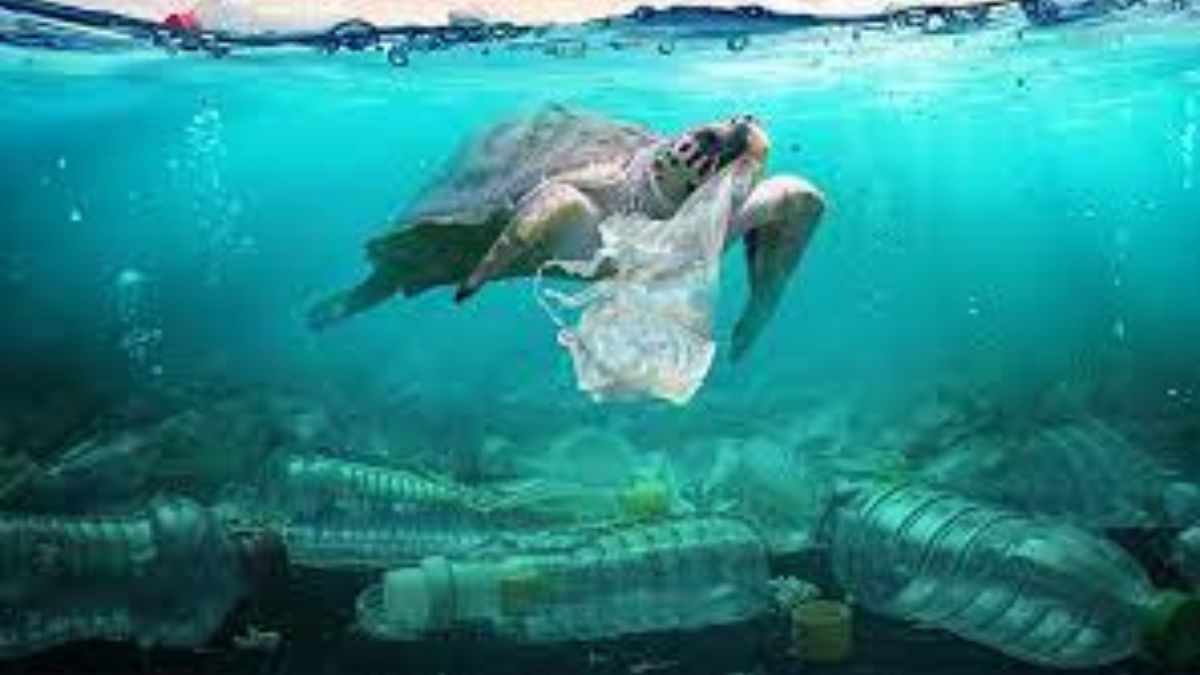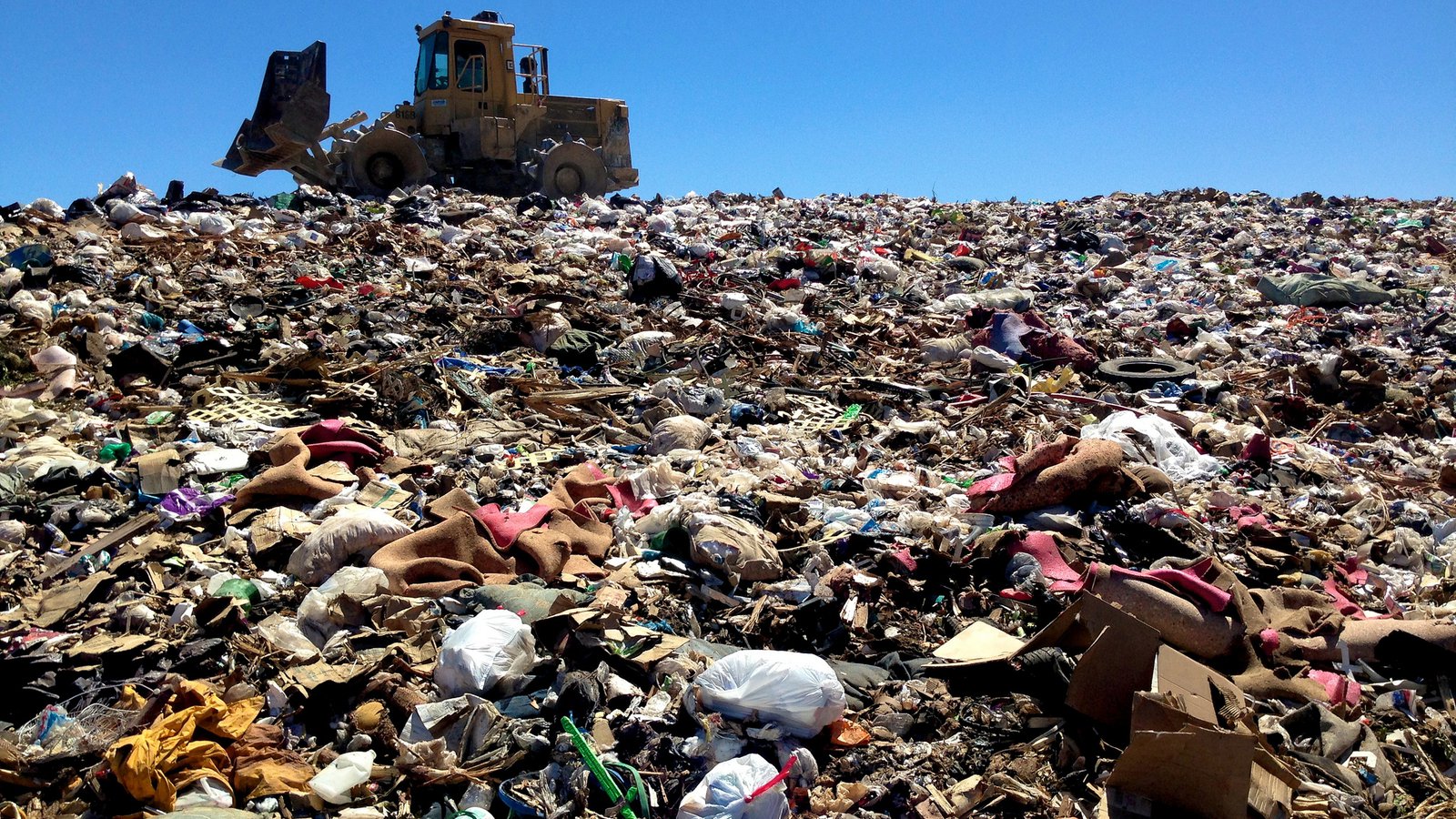Dumping iron nanoparticles into the oceans might save the planet : Research reveals
April 17, 2023 By Awanish Kumar

(Image Credit Google)
Image credit : Waste360
Proponents of a bold plan to "fertilize" the world's oceans with iron claim that microscopic marine plants that absorb CO2 from the atmosphere might play a significant role in assisting in halting climate change.
Deep sea storage: According to climate experts, reducing the amount of additional greenhouse gases we pump into the atmosphere is essential for halting the worst effects of climate change, but doing so alone won't be sufficient since we also need to capture some of the carbon already already in the atmosphere.
Making the most of the oceans' ability to absorb carbon dioxide is one approach to achieve this goal; these waters already take up 25% of human CO2 emissions, largely as a result of phytoplankton activity.
These tiny, single-celled plants develop close to the ocean's surface and use photosynthesis to absorb light and CO2 and create energy. When the phytoplankton die and sink, some of that carbon is subsequently trapped in the deep ocean.
Iron Age: Phytoplankton, like other plants, require nutrients, particularly iron, which is inherently rare in some areas of the ocean, to flourish.
Natural occurrences in the past have shown us that raising the iron levels in these oceans can significantly accelerate phytoplankton development. Iron-rich ash from volcanic eruptions has caused phytoplankton blooms large enough to be seen from space when it has fallen on the ocean's surface.
The "iron hypothesis," which contends that "fertilizing" the ocean with iron may increase the amount of carbon-sucking phytoplankton and, potentially, be enough to cool the entire Earth, was developed by oceanographer John Martin in response to this understanding.
Martin's coworkers at Moss Landing Marine Laboratories tested the theory in 1993, not long after his passing, by raising the iron concentration over 64 square kilometers of the Pacific Ocean. After ten days of observation, they noticed a two-fold increase in plant biomass.
“All biological indicators confirmed an increased rate of phytoplankton production in response to the addition of iron,” they wrote in a
paper detailing the experiment.
Since then, more than a dozen further ocean fertilization studies have been carried out, but while they do appear to result in a bloom of plankton, it is still unclear whether the strategy could genuinely aid in the fight against climate change.
[caption id="attachment_154058" align="aligncenter" width="1674"]

Image credit : Nature[/caption]
By measuring carbon particles 800 meters beneath the surface of the water in the area for a year in 2009, researchers from the Department of Energy's Lawrence Berkeley National Laboratory monitored the effects of a significant ocean fertilization experiment in the Southern Ocean between New Zealand and Antarctica. Their findings, however, were anything but encouraging.
“Just adding iron to the ocean hasn’t been demonstrated as a good plan for storing atmospheric carbon,”
said researcher Jim Bishop. “What counts is the carbon that reaches the deep sea, and a lot of the carbon tied up in plankton blooms appears not to sink very fast or very far.”
There are several theories explaining why this is the case, some of which center on the feeding patterns of organisms that depend on phytoplankton and the availability of iron-binding organic compounds in ocean water. However, experts are currently working to understand why this is the case.
Also read :
This plastic-consuming bacteria might help save the planet
However, some climatologists aren't quite ready to abandon the notion of ocean fertilization just yet.
An international team of experts lead by researchers at the University of Leeds and the DOE's Pacific Northwest National Laboratory published a report in November 2022 that posited that altering the fertilizer's delivery method would be the solution.
By Awanish Kumar
I keep abreast of the latest technological developments to bring you unfiltered information about gadgets.


 Image credit : Nature[/caption]
By measuring carbon particles 800 meters beneath the surface of the water in the area for a year in 2009, researchers from the Department of Energy's Lawrence Berkeley National Laboratory monitored the effects of a significant ocean fertilization experiment in the Southern Ocean between New Zealand and Antarctica. Their findings, however, were anything but encouraging.
“Just adding iron to the ocean hasn’t been demonstrated as a good plan for storing atmospheric carbon,” said researcher Jim Bishop. “What counts is the carbon that reaches the deep sea, and a lot of the carbon tied up in plankton blooms appears not to sink very fast or very far.”
There are several theories explaining why this is the case, some of which center on the feeding patterns of organisms that depend on phytoplankton and the availability of iron-binding organic compounds in ocean water. However, experts are currently working to understand why this is the case.
Also read : This plastic-consuming bacteria might help save the planet
However, some climatologists aren't quite ready to abandon the notion of ocean fertilization just yet.
An international team of experts lead by researchers at the University of Leeds and the DOE's Pacific Northwest National Laboratory published a report in November 2022 that posited that altering the fertilizer's delivery method would be the solution.
Image credit : Nature[/caption]
By measuring carbon particles 800 meters beneath the surface of the water in the area for a year in 2009, researchers from the Department of Energy's Lawrence Berkeley National Laboratory monitored the effects of a significant ocean fertilization experiment in the Southern Ocean between New Zealand and Antarctica. Their findings, however, were anything but encouraging.
“Just adding iron to the ocean hasn’t been demonstrated as a good plan for storing atmospheric carbon,” said researcher Jim Bishop. “What counts is the carbon that reaches the deep sea, and a lot of the carbon tied up in plankton blooms appears not to sink very fast or very far.”
There are several theories explaining why this is the case, some of which center on the feeding patterns of organisms that depend on phytoplankton and the availability of iron-binding organic compounds in ocean water. However, experts are currently working to understand why this is the case.
Also read : This plastic-consuming bacteria might help save the planet
However, some climatologists aren't quite ready to abandon the notion of ocean fertilization just yet.
An international team of experts lead by researchers at the University of Leeds and the DOE's Pacific Northwest National Laboratory published a report in November 2022 that posited that altering the fertilizer's delivery method would be the solution.






